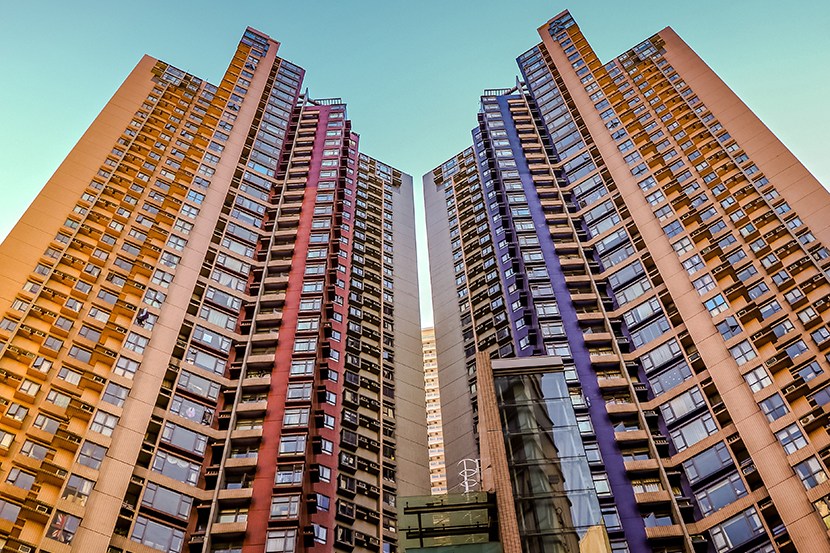
CMBS Delinquency Rate Declines for Third Straight Month

Fitch Ratings, New York, reported the U.S. commercial mortgage-backed securities delinquency rate fell 14 basis points in January to 4.55 percent due to a slowing pace of new delinquencies and strong new issuance.
New delinquencies decreased from $2.0 billion in December to $1.3 billion in January, while $6.1 billion in new Fitch-rated issuance volume contributed to a higher overall index denominator, the firm said.
But the recent delinquency rate declines come with a caveat, said DBRS Morningstar, New York. “Some of the loans are identified as current because forbearances were granted and borrowers were authorized to use reserves to bring debt service payments up to date,” the firm’s January CMBS Outlook report said. “As forbearances end, there will be upward pressure on the delinquency rate, but we expect a rebounding economy to offset some of that pressure.”
Fitch reported new delinquencies mostly came from hotel (28 loans; $564 million), retail (18 loans; $268 million) and office (seven loans; $252 million) properties in January.
Resolution volume remained consistent from the prior month at $1.8 billion and special servicing volume inched higher in January to $29.9 billion, or 6 percent of the Fitch-rated U.S. CMBS universe. Nearly 75 percent of the special servicing volume ($21.9 billion) were at least 60 days delinquent in January, down slightly from 74 percent ($22.1 billion) in December, Fitch said.
“As the volume of vaccinations grows and the economy starts to regain its footing, we expect the delinquency rate to ease,” DBRS said. It forecast the rate could fall to 3.5 percent to 4.0 percent by mid-year but said delinquency rate improvements are being “stymied” at the moment by the hotel and retail sectors.
Hotel CMBS loans had a nearly 20 percent delinquency rate in November. “However, the rate of openings is stalling, especially at the upper end,” DBRS said. “As such, we project a small decline in the delinquency rate to around 15 percent by mid-year.”
December’s retail delinquency rate approached 13 percent, DBRS reported. “Weakness in the retail property sector is likely to persist and recovery will take time because of economic uncertainties, retail bankruptcies, store closures and struggling small businesses and malls,” the report said. It added the retail delinquency rate will likely struggle to get below 10 percent until mall loans are resolved.
“We believe that the second half of 2021 is when we’ll have significant diminished uncertainty,” DBRS said. “The coming widespread distribution of vaccines could prove to be the long-awaited light at the end of the tunnel for some struggling assets.”
New delinquencies decreased from $2.0 billion in December to $1.3 billion in January, while $6.1 billion in new Fitch-rated issuance volume contributed to a higher overall index denominator, the firm said.
But the recent delinquency rate declines come with a caveat, said DBRS Morningstar, New York. “Some of the loans are identified as current because forbearances were granted and borrowers were authorized to use reserves to bring debt service payments up to date,” the firm’s January CMBS Outlook report said. “As forbearances end, there will be upward pressure on the delinquency rate, but we expect a rebounding economy to offset some of that pressure.”
Fitch reported new delinquencies mostly came from hotel (28 loans; $564 million), retail (18 loans; $268 million) and office (seven loans; $252 million) properties in January.
Resolution volume remained consistent from the prior month at $1.8 billion and special servicing volume inched higher in January to $29.9 billion, or 6 percent of the Fitch-rated U.S. CMBS universe. Nearly 75 percent of the special servicing volume ($21.9 billion) were at least 60 days delinquent in January, down slightly from 74 percent ($22.1 billion) in December, Fitch said.
“As the volume of vaccinations grows and the economy starts to regain its footing, we expect the delinquency rate to ease,” DBRS said. It forecast the rate could fall to 3.5 percent to 4.0 percent by mid-year but said delinquency rate improvements are being “stymied” at the moment by the hotel and retail sectors.
Hotel CMBS loans had a nearly 20 percent delinquency rate in November. “However, the rate of openings is stalling, especially at the upper end,” DBRS said. “As such, we project a small decline in the delinquency rate to around 15 percent by mid-year.”
December’s retail delinquency rate approached 13 percent, DBRS reported. “Weakness in the retail property sector is likely to persist and recovery will take time because of economic uncertainties, retail bankruptcies, store closures and struggling small businesses and malls,” the report said. It added the retail delinquency rate will likely struggle to get below 10 percent until mall loans are resolved.
“We believe that the second half of 2021 is when we’ll have significant diminished uncertainty,” DBRS said. “The coming widespread distribution of vaccines could prove to be the long-awaited light at the end of the tunnel for some struggling assets.”
